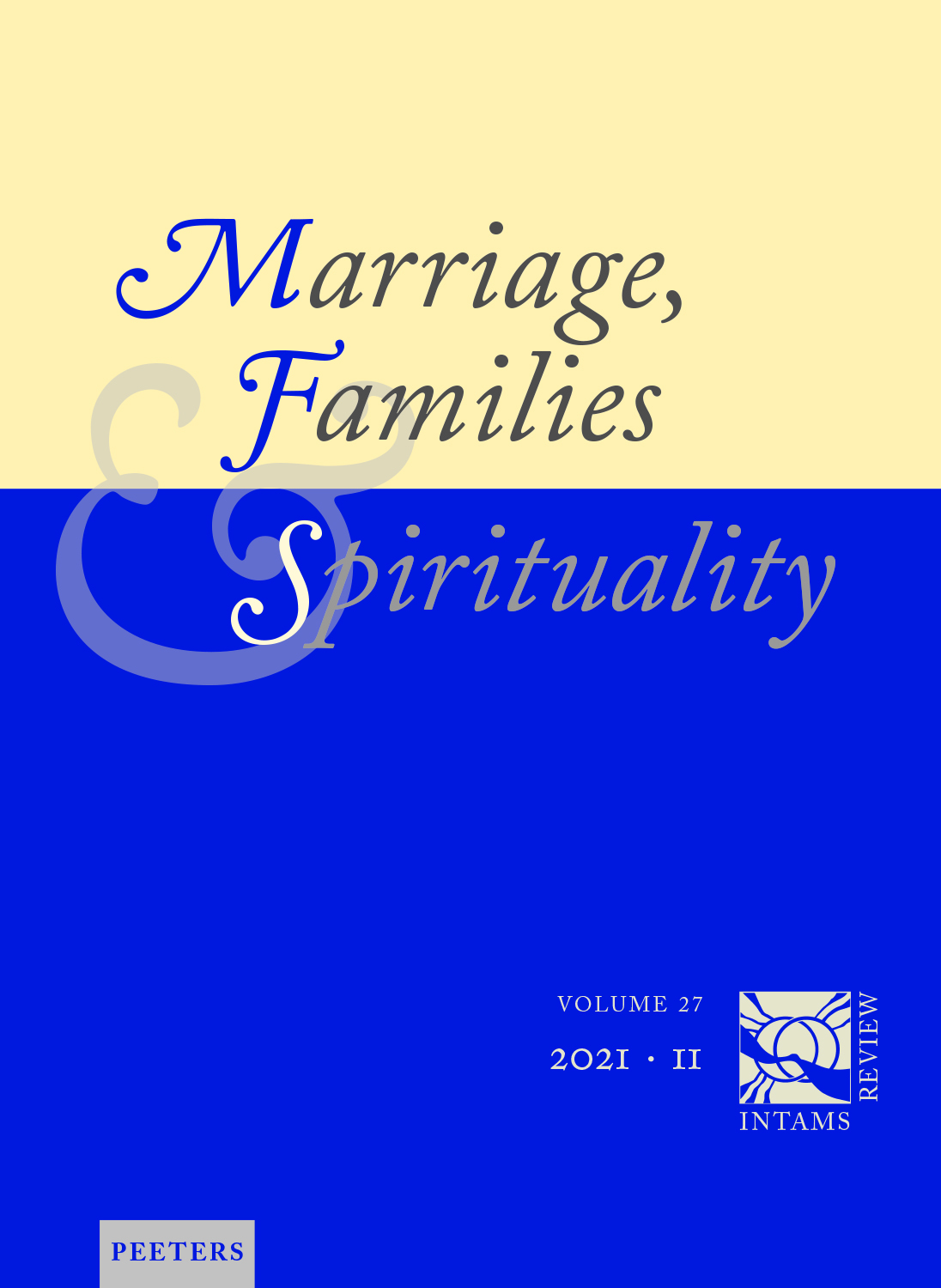 previous article in this issue previous article in this issue | next article in this issue  |

Preview first page |
Document Details : Title: Preparing for Marriage Subtitle: Sign, Symbol and Sacrament Author(s): CHAPPELL, Keith Journal: Marriage, Families & Spirituality Volume: 15 Issue: 1 Date: 2009 Pages: 23-29 DOI: 10.2143/INT.15.1.2042594 Abstract : This study uses ethnographical techniques following the semiotic cultural theory of Clifford Geertz to examine a small cohort of couples preparing for marriage in the Catholic Church in England. Most couples in the study were already cohabiting prior to marriage and many already had children. The key questions asked are: Why get married?, and Why get married in the Church? This is investigated by examining some of the symbolic expressions and the understanding of symbols held by couples. The results suggested categorisation into three groups of sign, symbol and sacrament. Many couples saw their choice to marry as an active step away from the new cultural norm of not getting married. Thus marriage became a sign of contradiction which suggested a higher calling for their relationship. Much of the symbolism chosen by couples for their liturgy, or in the wider context of their wedding day, suggested an emphasis on commitment as the expression of their love for each other. It is this significance of commitment which drives the desire to be contradictory and underpins an heroic vision to be ambitious for themselves, their relationship and for any children that may be present now or in the future. This ambition is a desire to be the best that they can be, not in a competitive sense but a hope for genuine fulfilment. Hope is crucial to this ambition but it appears to be an existential hope rather than an eschatological hope. The ambition is for this world and not one consciously focussed on redemption or salvation. Transformation is, however, important in this hope and ambition. There appears to be a belief that marriage can bring 'something' to the relationship that will bring about change and raise the couple up to a new level in their relationship. If the couples express this consciously it is through a belief in the power of commitment to change them. The language and symbolism used is often resonant of covenant language and the ideas involved suggest a transformation or initiation into a new life via the sacrament. |
|


